Roger Gastman’s Los Feliz Spanish bungalow

Roger Gastman, co-curator of the Museum of Contemporary Art’s upcoming “Art in the Streets” show, didn’t crave a gourmet kitchen or bay windows with views. He sought an element of surprise. Gastman, 33, has taken a Spanish bungalow that looks thoroughly ordinary on the outside and made it totally Gastman on the inside. More on that octopus chandelier in a bit ... (Jay L. Clendenin / Los Angeles Times)

Gastman’s house, in Los Angeles’ Los Feliz neigborhood, looks like much of the rest of the street on the outside. But inside ... (Jay L. Clendenin / Los Angeles Times)
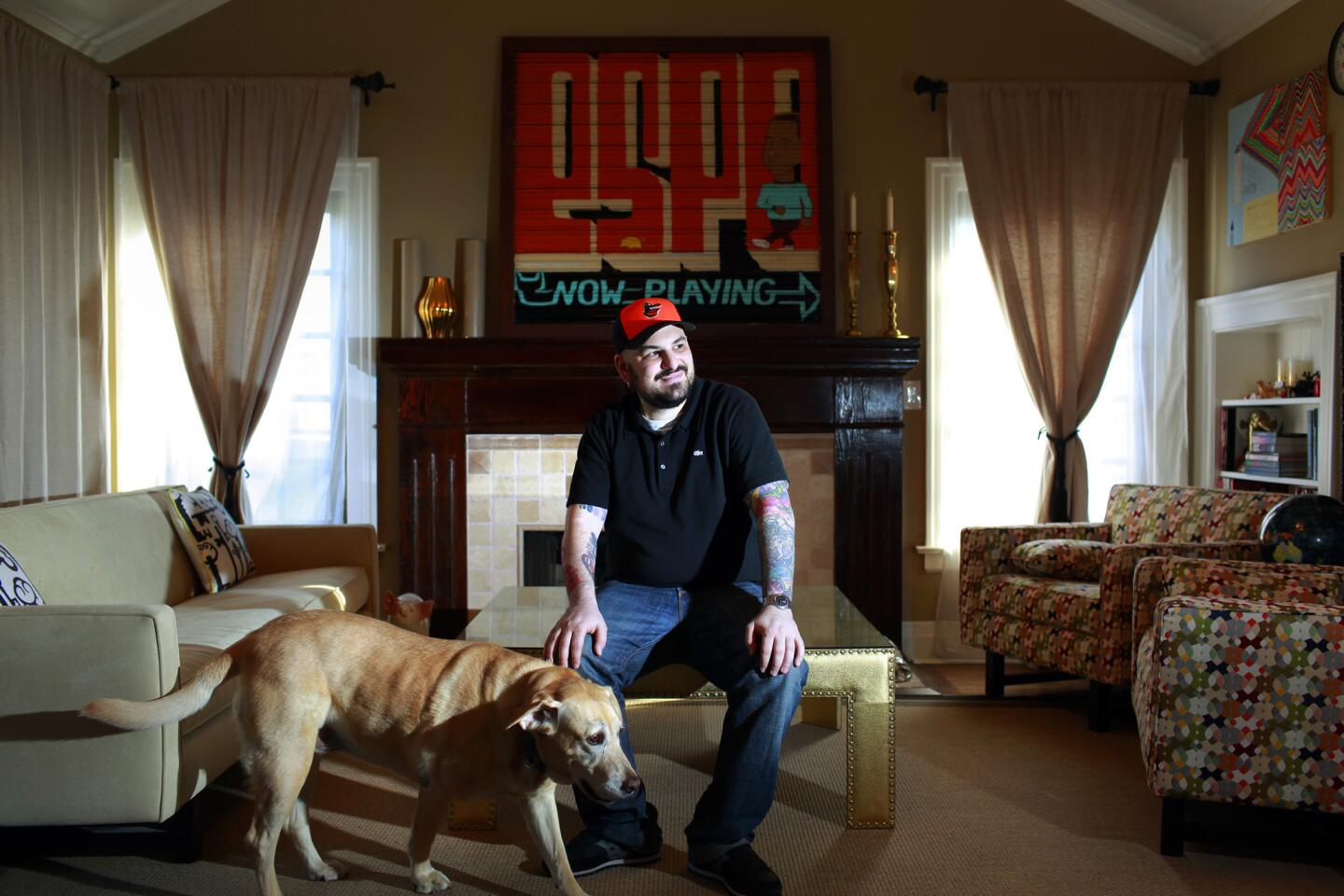
Gastman furnished his living room with a sofa and chairs from Room & Board. The Parsons-style coffee table is gold with nail-head studs. “It was either that or a stripper pole,” Gastman said. (Jay L. Clendenin / Los Angeles Times)
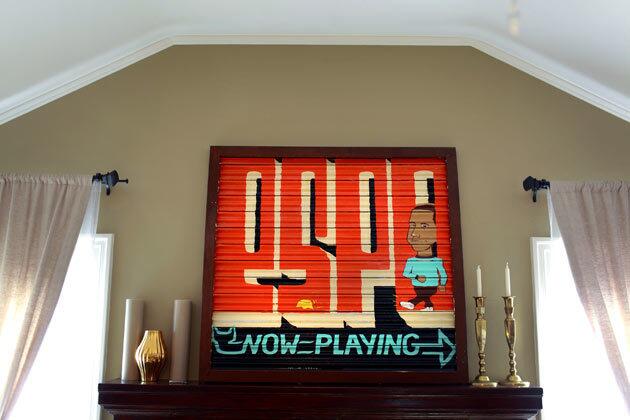
The oak mantel of the living room fireplace holds work by the street artist Espo. “It’s made from a roll-down gate with a welded metal frame around it,” Gastman said of the weighty work. It’s not going anywhere else in the house.” (Jay L. Clendenin / Los Angeles Times)
Advertisement
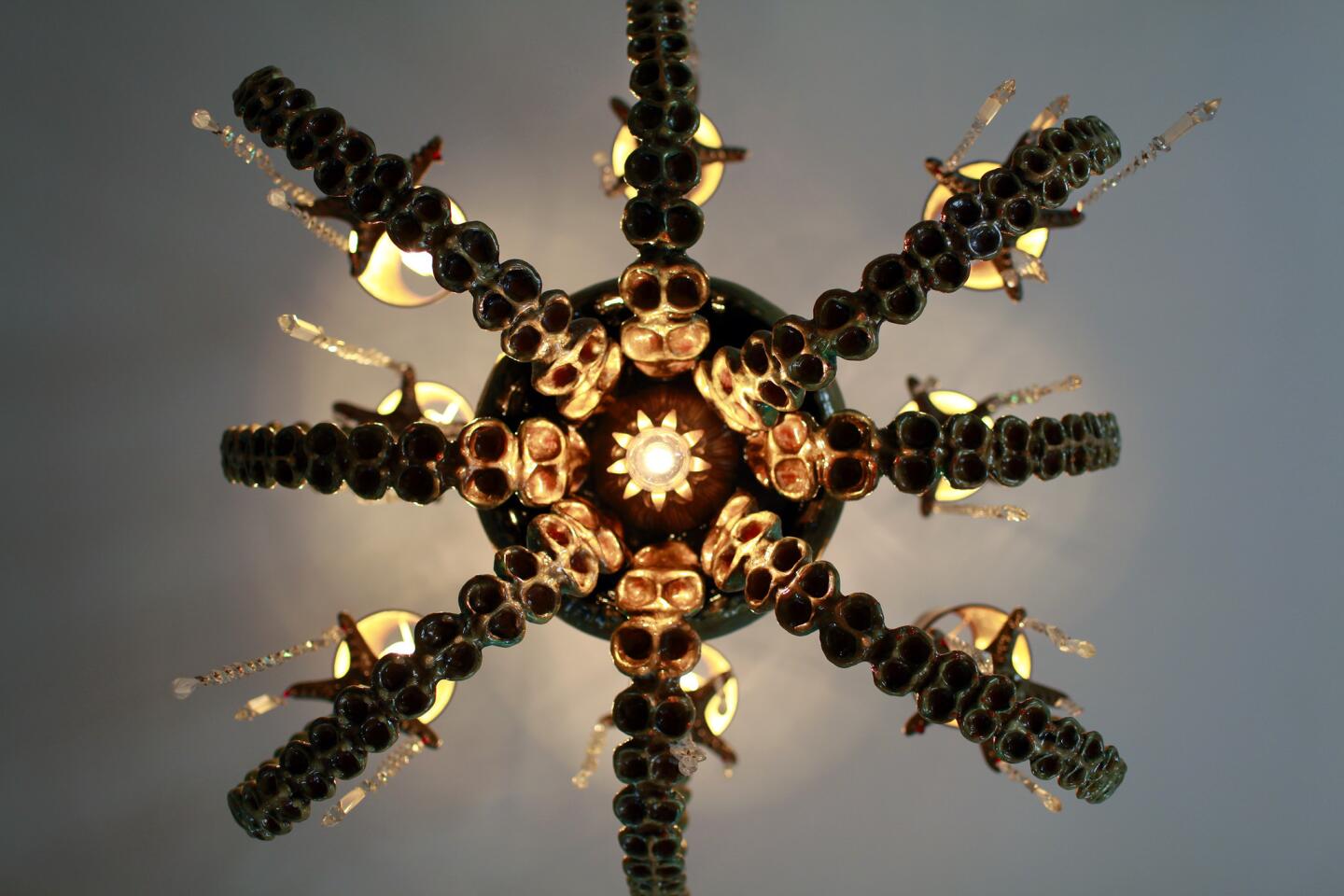
Hanging from the center of the vaulted living room ceiling is an octopus-inspired chandelier by artist Adam Wallacavage, Gastman’s frequent collaborator on book projects and art exhibitions. (Jay L. Clendenin / Los Angeles Times)
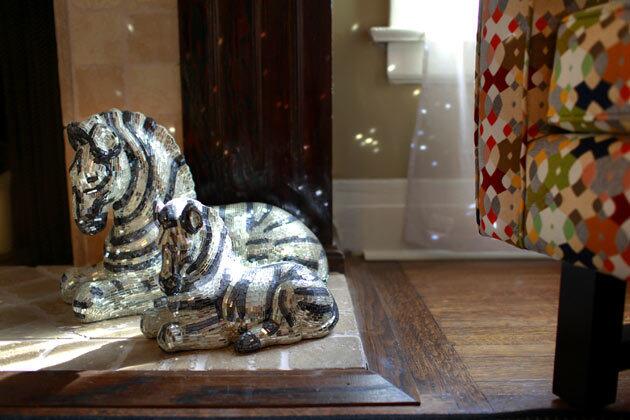
By the fireplace, Gastman has two mirror-clad zebra statues. “They are amazingly awesomely gaudy,” Gastman said. “Of all the art I have, the zebras are probably the thing I get the most comments about.” (Jay L. Clendenin / Los Angeles Times)
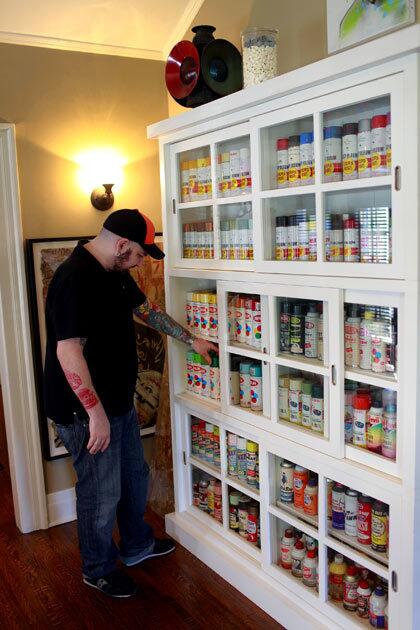
Gastman grouped his collection of vintage spray-paint cans in a most traditional cabinet. “I searched forever for a display cabinet and ended up purchasing this one at Crate & Barrel. I like that it has an open pantry feel to it.” (Jay L. Clendenin / Los Angeles Times)
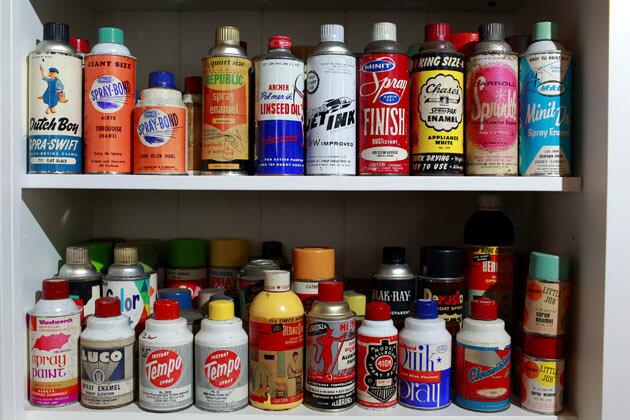
“I have lots of memories of talking my way into hardware stores to get to the old paint,” Gastman said of his collection of Krylon, Dutch Boy and Red Devil spray paints. Graffiti artists and enthusiasts, he added, collect and trade vintage paint cans like baseball cards. (Jay L. Clendenin / Los Angeles Times)
Advertisement
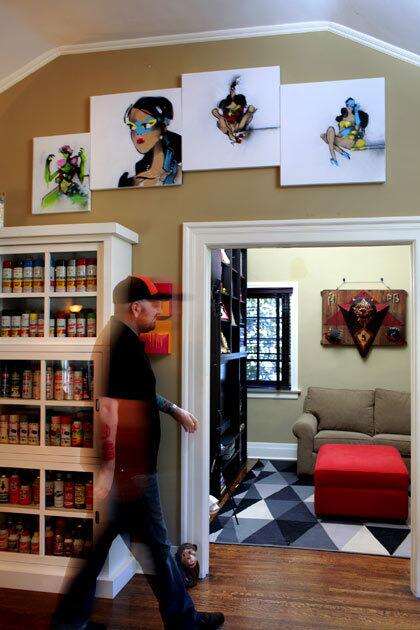
The collection of vintage spray-paint cans occupies one wall by the entry to the den, which is decorated with a triangle-patterned IKEA rug and a red ottoman. Above the doorway, the collector arranged four paintings by Australian artist Anthony Lister. “They have the same color palette, and to me they belong together,” he said. (Jay L. Clendenin / Los Angeles Times)
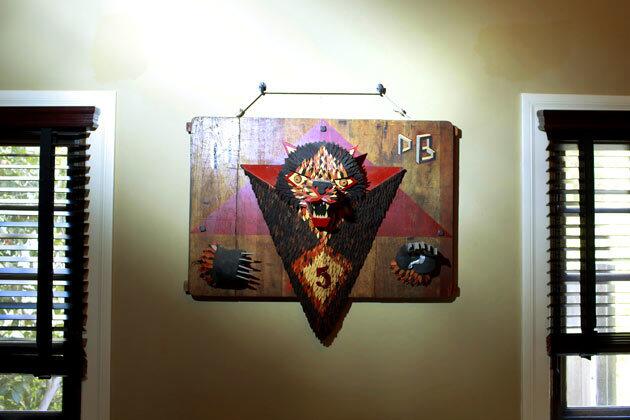
In Gastman’s media den, A.J. Fosik’s mixed-media piece features a bear made out of wood scraps. (Jay L. Clendenin / Los Angeles Times)
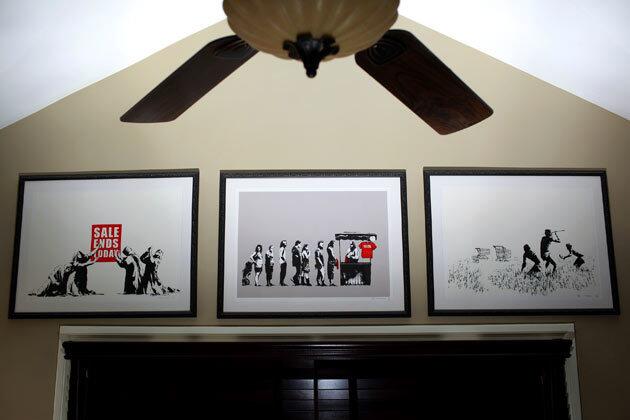
The ceiling fans throughout the house weren’t exactly Gastman’s taste, but they had two things going for them: They fit the style of the house, he said, “and they worked.” They also provide a nice contrast to three prints in his den by the legendary Banksy. Gastman was a producer on “Exit Through the Gift Shop.” (Jay L. Clendenin / Los Angeles Times)
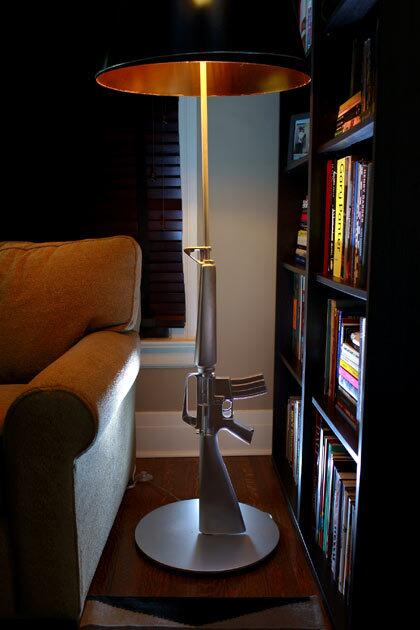
In a corner of the den, Gastman has a variation on the gun floor lamp that Philippe Starck designed for Flos. Gastman purchased it at Room Service in Los Angeles. (Jay L. Clendenin / Los Angeles Times)
Advertisement
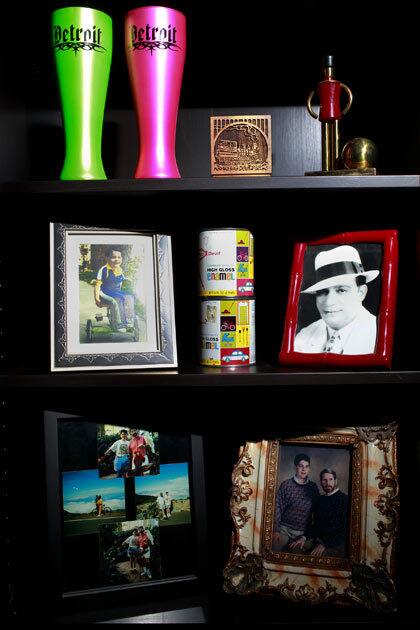
Under the gun: picture frames set on black bookshelves. Bold color is a theme that plays out throughout the house, including ... (Jay L. Clendenin / Los Angeles Times)
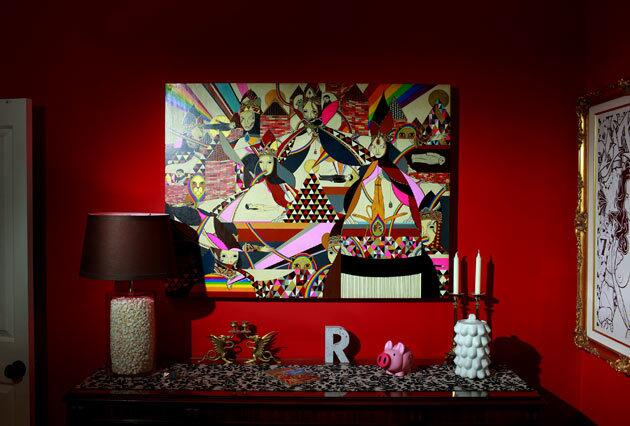
The dining room: Gastman painted the space a warm red. He bought the buffet, part of a 1920s dining room set, from his mother, who runs estate sales in Bethesda, Md. A pair of brass griffin candlesticks, also from one of his mom’s sales, and a bisque vase by Jonathan Adler finish the vignette. The lamp, from Crate & Barrel, has a clear glass base that Gastman filled with the plastic nozzle tips from spray paint cans. Above the buffet is a 2007 work by Richard Colman. “He was my best friend and partner in crime growing up,” Gastman said. To the right: One of Gastman’s two Sharpie pen-on-paper pieces by San Francisco graffiti and tattoo artist Mike Giant hangs in a cheap Rococo frame. (Jay L. Clendenin / Los Angeles Times)
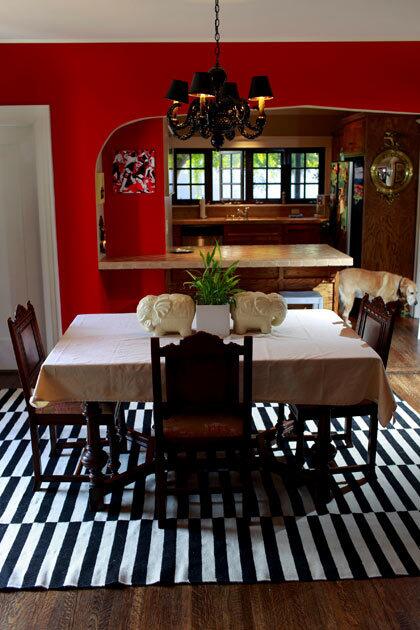
An ornately carved antique dining room set sits on a striped IKEA rug, roughly 8 by 11.5 feet. It cost Gastman about $300. “I don’t like spending on rugs because of dogs and foot traffic,” he said. “I liked that it was simple and makes the room appear bigger than it does. It creates an island in the room.” Note the curved arch behind the table ... (Jay L. Clendenin / Los Angeles Times)
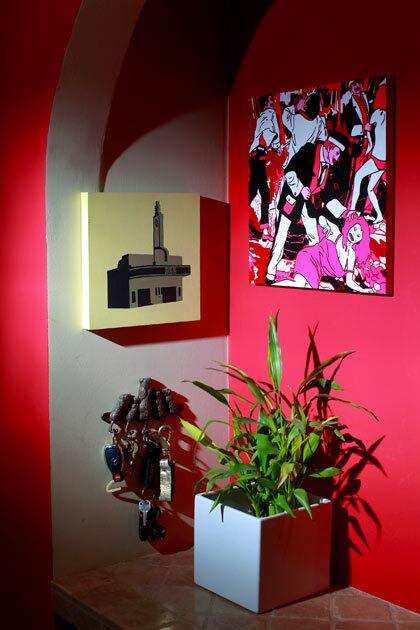
Inside that curved arch, at the end of a kitchen counter, Gastman hung a Cleon Peterson work and a painted wood scene of an Art Deco theater by the artist Wise. Below it, Gastman keeps his keys on a Labrador retriever hook. (Jay L. Clendenin / Los Angeles Times)
Advertisement
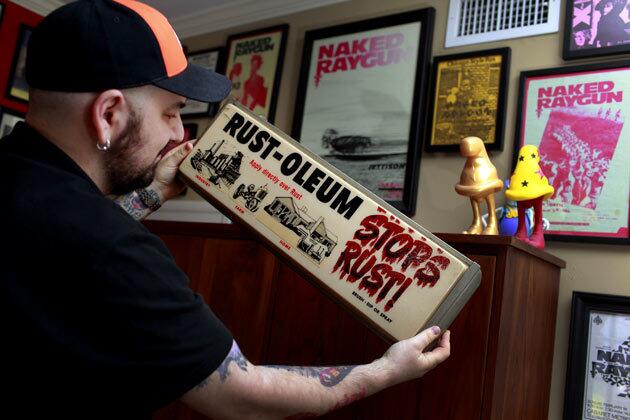
Gastman collects graffiti paraphernalia, such as a panel from a clock that Rust-Oleum gave to hardware stores. It sits atop a tall storage cabinet from Room & Board. (Jay L. Clendenin / Los Angeles Times)
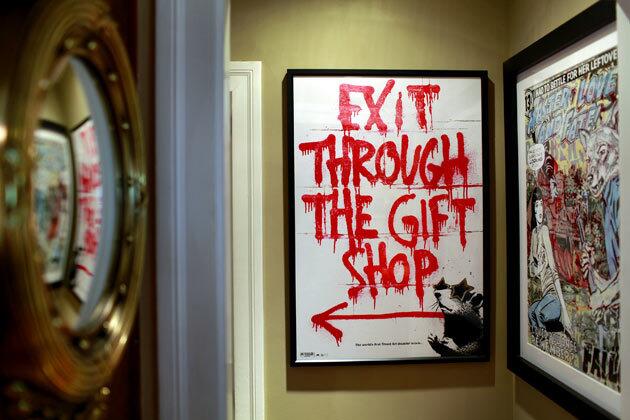
Big art, little spaces: A small hallway leads from the kitchen to the home office. Gastman used it to display large-scale artwork, including a comic book-influenced piece by Faile and a poster for the Banksy-directed documentary “Exit Through the Gift Shop.” (Jay L. Clendenin / Los Angeles Times)
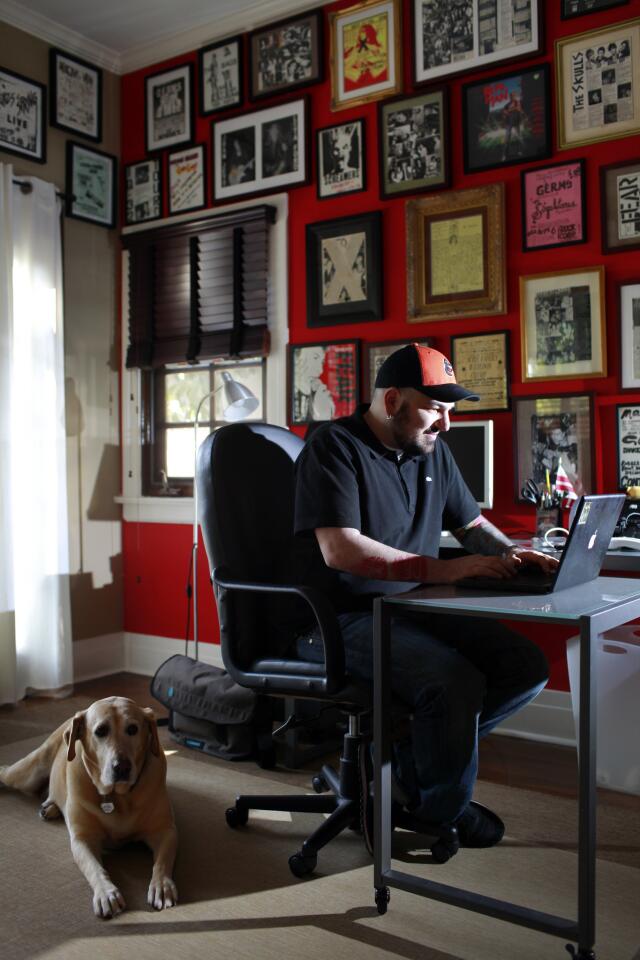
Though he has an office for R. Rock Enterprises, a media agency representing street artists for advertising, book and film projects, Gastman often works in his home office. He painted one wall of the converted bedroom red to create a dramatic backdrop. “I think about the framing, the color and and the pattern of the pieces,” he said of the salon-style installation. Most of the works are punk rock fliers, fanzine pages, album covers and framed letters. (Jay L. Clendenin / Los Angeles Times)
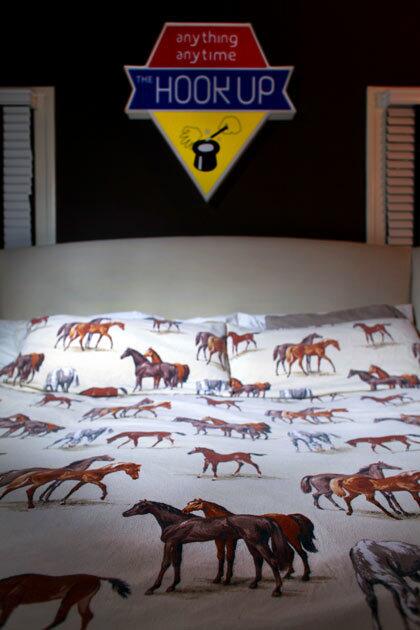
In the master bedroom, deep brown walls create a hideaway. “I like a bedroom to be a cave,” Gastman said. “No matter what’s going on in my house or life I can go in here and disappear.” His playful sensibility extends to horsey bedding and “The Hook Up,” a piece by Espo. (Jay L. Clendenin / Los Angeles Times)
Advertisement
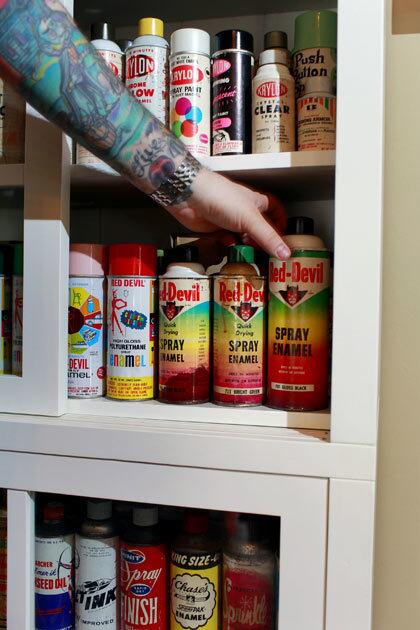
In the world according to Gastman, a display case for spray-paint cans is good. Spotlights for art? Not so much. “This isn’t a gallery, it’s my house,” he said, adding later, “the last thing I need to do is put a special light on something to brag.” There might be one exception, he said with a grin: “If it was an awesome picture of yellow Labs playing poker on black velvet or a portrait of me on a fox hunt, I could see lighting that.”
Related article: David A. Keeps’ full article.
More tours: California homes in pictures
Headlines: Follow home design coverage via Facebook (Jay L. Clendenin / Los Angeles Times)



